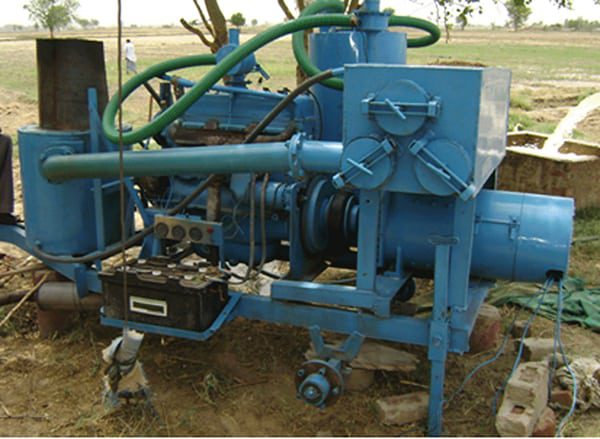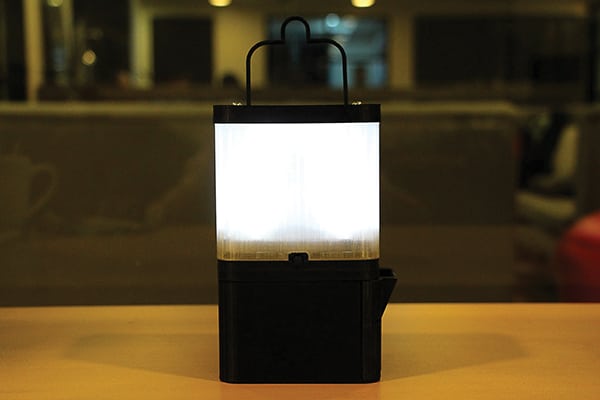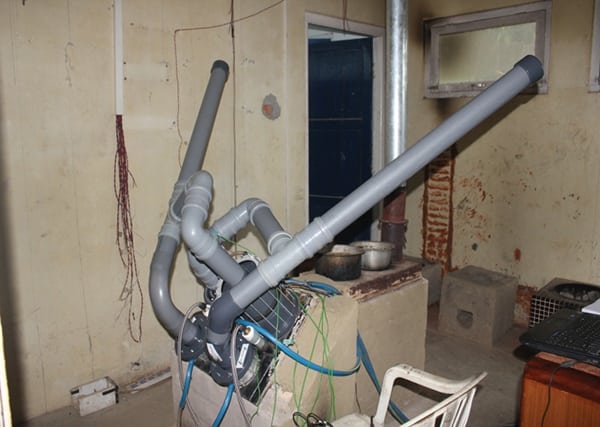Power Technology Innovations from the Developing World
From biomass gasification to microgrids, there’s no lack of power sector innovation coming from the developing world. Driven by a combination of growing demand and limited resources, inventive groups and individuals are finding novel ways to deliver power to the areas that need it most.
In its recently released Energy Technology Perspectives 2015, the International Energy Agency (IEA) noted that innovation in the energy sector differs from progress in other sectors in that it tends to move much more slowly, reflecting the fact that its technologies tend to be large, complex, and designed to operate for many years. The slow rate of change is also hinged on capital intensiveness, longevity of capital stock, and time needed for learning and experimentation.
For emerging economies, innovation is typically driven by soaring electricity demand growth rates and the resultant bid to expand power systems, which requires significant investment in the short term. While data on energy technology research, development, demonstration, and deployment (RD&D) in emerging economies is scarce, the IEA says that available data shows that the share of research funds is increasing: In 2008, Brazil, China, India, Mexico, Russia, and South Africa sank more RD&D funding into energy technologies than IEA member governments.
Here’s a look at how some countries are advancing power technology in ways both large and small.
Thorium Reactors
India has cultivated a robust, largely indigenous nuclear power program owing to the decades it spent as a nuclear pariah after being excluded from the Nuclear Non-Proliferation Treaty. The country has chalked out a three-stage program to reduce its reliance on imported uranium, seeking to make more substantial use of thorium, of which India holds 25% of the world’s total reserves. Although Th-232 is not itself fissile, it will absorb slow neutrons to produce fissile U-233 when placed in a reactor.
The first stage consists of setting up pressurized heavy-water reactors (PHWRs); the second stage will start with the deployment of domestically designed fast breeder reactors (FBRs) fueled with mixed oxides, and later, metallic fuel. The third stage will involve the gradual transition to thorium-based systems, likely through an advanced heavy water reactor (AHWR) being developed at the Mumbai-based Bhabha Atomic Research Center (BARC). The U-233 required for third-stage breeder reactors will be obtained by the irradiation of thorium in PHWRs and FBRs.
This April, the government confirmed that a 300-MW AHWR using thorium has been designed and developed by BARC, and the country’s 12th Five-Year Plan begins progress toward the start of construction. It said the cost of electricity for the design would be comparable to that from India’s newest standardized PHWRs.
Advanced Coal Technologies
India, the world’s most coal-dependent nation, is still banking on coal for a large share of its future power mix, though it hopes to replace older units with more efficient plants owing to a scarcity of land, water, and coal (see “India Refocuses Coal Future” in POWER’s November 2015 issue). Since the 1980s, even as interest in advanced coal technologies like integrated gasification combined cycle (IGCC) plants waned internationally owing to higher capital and operating costs, India’s government has continued efforts to develop them. For India, IGCC units hold promise because they can be more efficient at a smaller scale, emit less pollution, and use less water. Another reason, according to the IEA: “For high ash Indian coals that are typically characterised by higher melting points, studies have shown the air-blown fluidised bed gasification system to be the most suitable form in terms of cost, process efficiency and environmental impact.”
Development has mostly been led by state-owned Bharat Heavy Electricals Ltd. (BHEL), which is focused on demonstration of domestic technology (rather than leveraging foreign technology). BHEL has established a 6.2-MW IGCC demonstration plant with both moving-bed and fluidized-bed technology. BHEL and a number of state-owned entities, including India’s biggest coal generator, NTPC, are planning to set up a 100-MW IGCC plant for commercial demonstration.
In parallel, BHEL is assessing the feasibility and market potential of pressurized fluidized bed combustion (PFBC) and atmospheric fluidized bed combustion (AFBC) technologies, which provide beneficial fuel flexibility. So far, it has established a 6-metric-ton-per-day PFBC test facility and developed and proved the suitability of the PFBC process for high-ash coals; it also has developed an AFBC test facility.
Community Microgrids
High-tech microgrids have garnered much attention in the developed world as a means of boosting grid resiliency, but more basic systems are increasingly being used to bring electricity to the billion-plus people in the world without it. Such locations typically lack easy access to fossil fuels, which is why these community microgrids are often powered by renewables: solar photovoltaic (PV), wind, hydropower, and biomass. Navigant Research estimated in 2015 that remote microgrids—those without a connection to a larger grid—now make up more than half of all such deployments worldwide, and installed capacity will pass 1 GW by 2017.
Another report from the Economic Community of West African States (ECOWAS) estimates that most of the region’s PV capacity is located off-grid—roughly 50 MW in total. Mali, for example, has deployed 21 hybrid diesel-PV microgrids totaling 2.1 MW, and Senegal has 107 PV-powered microgrids totaling 1 MW. ECOWAS has identified microgrids as a key tool for rapidly advancing electrification in a region where 90% of rural populations lack access to electricity and expansion of the traditional grid is cost prohibitive.
Microgrids powered by wind and small hydropower are also being developed across Africa. The ECOWAS report notes, however, that these systems generally remain uneconomic from a business standpoint and must be developed with government or private subsidies. Still, it projects that 25% of the region’s rural population will get electricity from off-grid renewables by 2030.
Similar developments are under way in South Asia, where around 200 villages in India are now powered by renewable microgrids unconnected to the national grid. An active business sector serving these needs has sprung up, with both Indian and western companies offering solutions from the household to the village level. Capacities are typically quite small—powering a few LED lights and a cell-phone charger in each home—but this is enough to make an enormous difference for families with no other options. Electricity costs are competitive with the diesel and kerosene lighting these villages had previously relied on in addition to being much cleaner.
A Bladeless Wind Converter
Africa’s wind innovations have come a long way since William Kamkwamba, a teenager from Malawi, made headlines for a wind turbine he created using a bicyle dynamo and spare parts from his local junkyard just a decade ago.
Tunisian startup Saphon Energy in November 2014 won a collaborative agreement with Microsoft for a patented bladeless wind converter known as the Saphonian. Inventor Anis Aouini’s basic idea was to remove the whole rotating system (including the blades and hub) and replace it with a sail-shaped body (Figure 1). The curved shape of the Saphonian body is capable of capturing twice as much wind energy as a conventionally bladed wind turbine for the same swept area. The company says the prototype has come through five versions and is in the “pre-industrial stage.”
 |
|
1. Sail-inspired. The curved shape of the Saphonian body is capable of capturing twice as much wind energy as a conventional bladed wind turbine for the same swept area. Courtesy: Saphon Energy |
An Ingenious Biomass Gasifier
Rai Singh Dahiya, a farmer from India’s arid western state of Rajasthan, gained fame for inventing a biomass-based gasifier. The inventor, who never got a formal education, won an award from the National Innovation Foundation (NIF) for the invention, which he said was conceived in 1982 as he set up a kiln for baking bricks and observed that burning wood along with other fuel was producing gas that was burning more vigorously. A decade later, after successfully modifying a diesel engine to operate on propane, he set about to find out whether it was possible to run an engine on gas produced by burning wood.
His invention (Figure 2) modifies a conventional diesel engine by replacing the diesel injector system with a spark plug and a fuel pump with a distributor. The unit consists of a gasifier that is conical in shape, compact in design, and uniquely surrounded by a water jacket. Users can feed wood or briquettes from agricultural residues to the gasifier, and the unit acts as a 200C furnace to generate syngas. The syngas is cooled and partially cleaned by water and again by a filtration unit made up of sieve grills and cloth.
 |
|
2. A rural innovation. A biomass gasifier invented by Rai Singh Dahiya, an Indian farmer who never received a formal education, produces low-cost power. Courtesy: National Innovation Foundation |
According to the NIF, the gasifier can process about 20 kilograms of biowaste to run a 30-hp engine for one hour. “Also, the furnace in the gasifier unit can be built to different capacities as per availability of biomass and agricultural residue. Considering the cost of machine, fuel-biomass and local labor, this arrangement is estimated to cost less than half the cost per unit power when compared to normal electricity grids costing 4 [rupees] per unit [$0.06].”
A Power-Generating Cook Stove
Local universities in Bangladesh and Nepal and rural communities in Kenya have tested and advanced the Score-Stove, a sound-powered stove that also generates electricity. Developed by the Department of Electrical and Electronic Engineering at the University of Nottingham, the stove uses thermoacoustic technology to convert heat from wood, dung, or crop residuals into sound and then electrical energy, with surplus heat available for cooking (Figure 3).
In a thermoacoustic engine, heat is supplied from a source to a gas (in this case, air in the Score-Stove) via the hot heat exchanger (HHX). The heat is then removed via the ambient heat exchanger (AHX), and the gas undergoes repetitive thermal expansion and rarefaction to produce acoustic energy. Between the HHX and AHX is a porous material (a regenerator) with a temperature gradient across it to sustain a resonant acoustic wave. A linear alternator within a closed loop converts the acoustic wave into electricity. In a field trial of the design, the linear alternator was implemented using a low-cost loudspeaker working in reverse. The sound emitted by the stove is no louder than a hum.
After the research phase was completed in 2012, the second generation of the $90 Score-Stove (Score-Stove 2) showed that it could produce 23 W using wood as fuel and 37 W under lab conditions. Rural trials have proven that the device can produce enough power for two LEDs while cooking a meal.
The stove was developed as a means to reduce health problems that occur from chronic exposure to smoke and other pollutants emitted by rudimentary wood-fired cook stoves and open fires, which are the primary means of cooking in many areas of the developing world.
Though it holds promise, researchers from Bangladesh University noted in a 2014 paper that more work needs to be done. The current design is still too large, its performance is still inferior to a conventional stove using the same amount of fuel, and technical hurdles (such as water vapor condensation in the resonance tubes that dampens the linear actuator) still need to be addressed.
The Score-Stove 3, a more compact thermoelectric unit, is now being tested at Kathmandu University in Nepal, and developers are also working to adapt the stove to use liquid paraffin.
A Saltwater Lamp
Saltwater battery cells are familiar to anyone who ever took a high-school chemistry class, relying on nothing but water, salt, and two different metals to generate electricity. But as the design has much lower energy density and lower efficiency than competing technologies such as lithium-ion, they have seen little attention from a commercial standpoint.
But saltwater batteries have two big advantages in the developing world: They are easy to build, and the components are inexpensive and easily available. That’s garnered interest as a means of providing electricity where there are no other options.
A Filipino startup company named Sustainable Alternative Lighting, or SALt (www.salt.ph), has developed a portable LED lamp that needs nothing but saltwater to deliver about 8 hours of light or charge a mobile phone via a USB port (Figure 4).
 |
|
4. Salt-powered. The SALt LED lamp uses a saltwater-based galvanic battery to generate about 8 hours of illumination. Courtesy: SALt |
That’s a big advantage in an island nation where many poor villages have no access to electricity—but ample seawater to power the lamp. The company said the lamps are good for about six months of use before the anode needs to be replaced. The first units are in production and expected to be available for delivery this year. ■
— Sonal Patel and Thomas W. Overton, JD are POWER associate editors.
